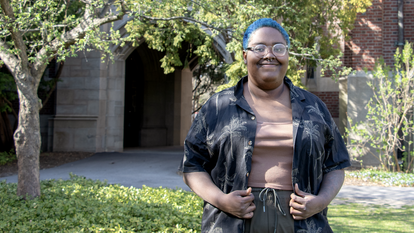Wellesley Professor Talks to USA Today about Discovery that Changed How We Look at Evolution

A recent archaeological dig in Morocco has the world talking—and for good reason. The archaeologists discovered fossils that reset the timeline for human evolution by 100,000 years. For commentary on the find, USA Today turned to Adam Van Arsdale, associate professor of anthropology at Wellesley. Van Arsdale is a widely published, nationally sought-after expert in the field; he has previously been cited by Scientific American and the Christian Science Monitor.
As a paleoanthropologist, Van Arsdale uses fossil records in his analysis of the evolution of biological variation and its connections to culture. In his study of early human evolution, he has most recently been involved with projects in Kazakhstan and Armenia.
The recent discovery in Morocco involved human fossils that date back 300,000 years, changing long-standing ideas about the origins of humanity. The location of the site in northern Africa, called Jebel Irhoud, also made news, changing long-held ideas that Homo sapiens’ earliest origins were exclusive to eastern Africa. Van Arsdale told USA Today the dating of the fossils suggests that some anatomically modern features of Homo sapiens developed much earlier than previously recognized.
In an email, Van Arsdale explained that the research out of Morocco “fits into a growing body of new studies that highlight the complexity of human evolution in the Pleistocene.” He pointed specifically to “research on ancient genetic data in the past several years—particularly across Eurasia, but with emerging data from Africa—[that] has highlighted the complex pattern of admixture between different groups of humans over the last 400,000 years.”
Van Arsdale noted that increasingly researchers warn that “the ‘first’ or ‘earliest’ appearance of a material culture or a behavior in the archaeological record” is absolutely no guarantee that future research won’t require revised, earlier origin dates. “Instead [these firsts] often seem to flicker—appearing, disappearing for long periods of time, and reappearing—before becoming a permanent part of humanity,” he said. New discoveries in the fossil record “attest to a complex mosaic of human variation at this time” of our evolution.
At Wellesley, Van Arsdale teaches courses in physical anthropology, human evolution, human genetics, osteology, and forensic anthropology. One challenge of teaching in the field, he said, can be responding quickly and meaningfully to new discoveries and ideas in human evolution. For example, when he taught his human evolution course most recently, fossils uncovered in South Africa had led to the recognition of a new species, Homo naledi. With only the published study to draw on, Van Arsdale turned to technology, which allowed him and his students to create 3D models of the new fossils. “Within a week of the publication [of the research], my students were able to print out replicas of the material (using Wellesley’s digital fabrication and making resources) and examine them directly, making their own observations, and testing their own hypotheses.”
Humanity’s earliest origins are a perennial topic of interest, and not just for adults. While Van Arsdale most often discusses his field with colleagues, his students and the media, this spring, as a guest expert on Vermont public radio’s But Why? podcast for kids, he helped the show explain human evolution to curious 5-, 6-, and 7-year-olds. Among their questions: Was there a first of every living thing? How did monkeys turn into people? What did cavemen eat that we still eat today?



